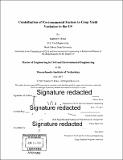| dc.contributor.advisor | Dennis B. McLaughlin. | en_US |
| dc.contributor.author | Brien, Gabriel T. (Gabriel Thomas) | en_US |
| dc.contributor.other | Massachusetts Institute of Technology. Department of Civil and Environmental Engineering. | en_US |
| dc.coverage.spatial | n-us--- | en_US |
| dc.date.accessioned | 2017-09-15T15:37:38Z | |
| dc.date.available | 2017-09-15T15:37:38Z | |
| dc.date.copyright | 2017 | en_US |
| dc.date.issued | 2017 | en_US |
| dc.identifier.uri | http://hdl.handle.net/1721.1/111516 | |
| dc.description | Thesis: M. Eng., Massachusetts Institute of Technology, Department of Civil and Environmental Engineering, 2017. | en_US |
| dc.description | Cataloged from PDF version of thesis. | en_US |
| dc.description | Includes bibliographical references (pages 68-71). | en_US |
| dc.description.abstract | The magnitude of crop production per unit area has increased in the US in the last 50 years due to the green revolution (Femandez-Comejo, 2004). Yet, even with these increases, there is still variability in crop yield that is present in modem, intensive agricultural systems (Porter and Semenov, 2005). This variability has a negative effect on food security which depends on a minimum amount of food being available at a given point in time. By definition, food cannot be secure unless it is guaranteed to a certain level (Maxwell, 1996). Hence, an understanding of crop yield variability is essential to the question of food security. Using a linear mixed effects analysis for a particular US state and a particular crop, environmental factors that affect variability were shown, in both irrigated and rainfed crop situations to explain over 80% of yield variance. The variance was linked to two major factors: daily air temperature and soil moisture. For rainfed yield, temperature effects explained 40% of the yield variance while soil moisture explained 43% of yield variance. For irrigated yield temperature effects explained 87% of the yield variance. The results suggest that yield variance occurs from variation in the season averages, and in specific points in the growing season, for the major factors highlighted. This assessment is confirmed by moisture and temperature sensitivity characteristics of the crop in question. It is shown by exploratory, time series, and spatial analysis that low yield observations have contrasts in growing season conditions both during key crop reproduction periods and over the entire season. Herein it is argued that variation in temperature effects and moisture have the highest effect on crop yield particularly when they occur during the reproductive phase of the plant. | en_US |
| dc.description.statementofresponsibility | by Gabriel T. Brien. | en_US |
| dc.format.extent | 71 pages | en_US |
| dc.language.iso | eng | en_US |
| dc.publisher | Massachusetts Institute of Technology | en_US |
| dc.rights | MIT theses are protected by copyright. They may be viewed, downloaded, or printed from this source but further reproduction or distribution in any format is prohibited without written permission. | en_US |
| dc.rights.uri | http://dspace.mit.edu/handle/1721.1/7582 | en_US |
| dc.subject | Civil and Environmental Engineering. | en_US |
| dc.title | Contribution of environmental factors to crop yield variation in the US | en_US |
| dc.type | Thesis | en_US |
| dc.description.degree | M. Eng. | en_US |
| dc.contributor.department | Massachusetts Institute of Technology. Department of Civil and Environmental Engineering | |
| dc.identifier.oclc | 1003324257 | en_US |
